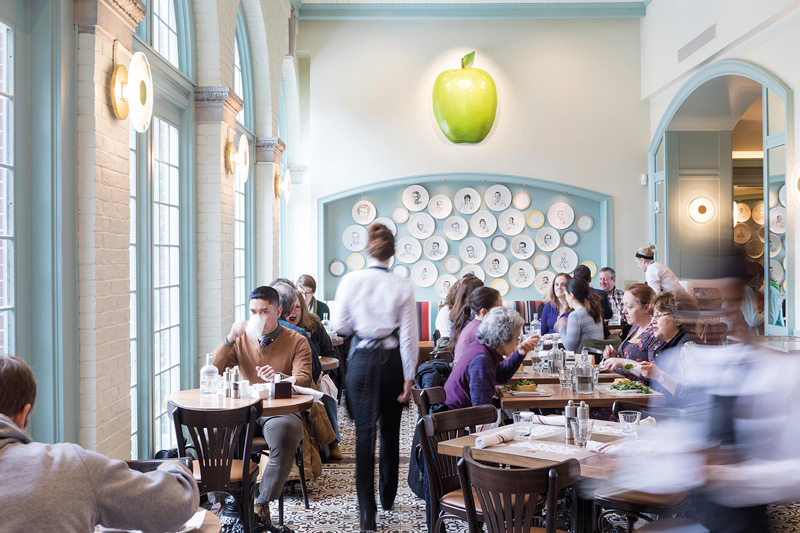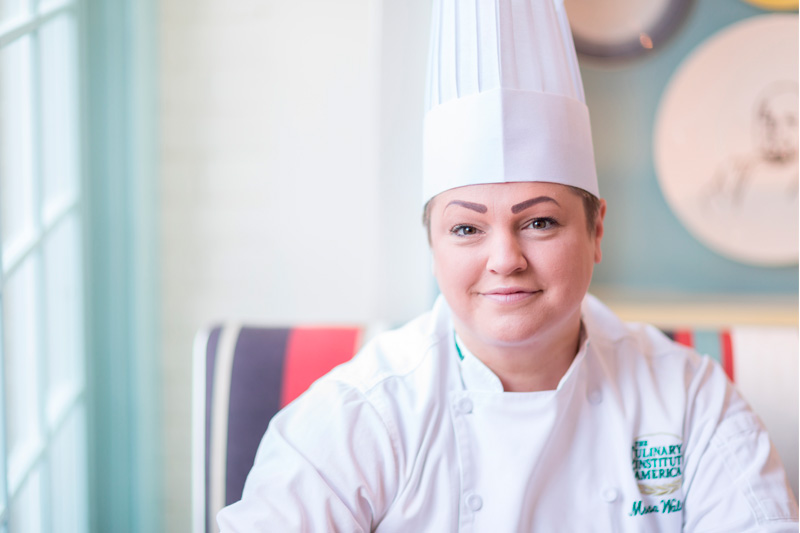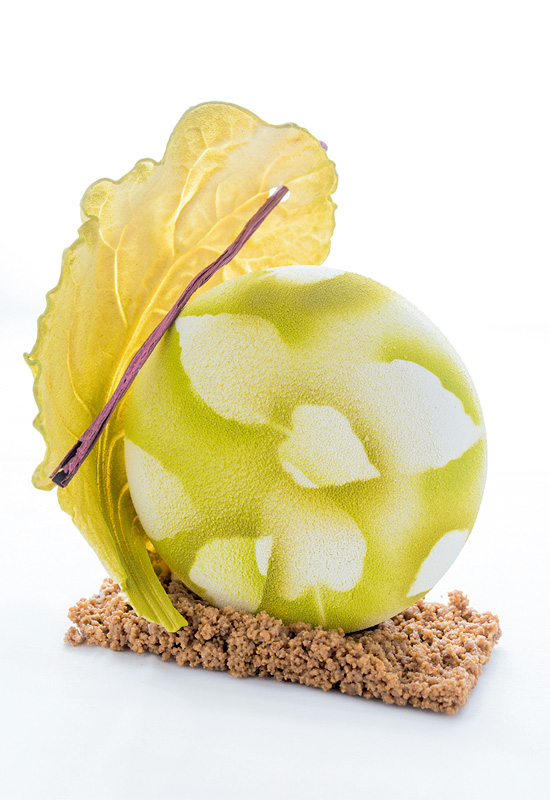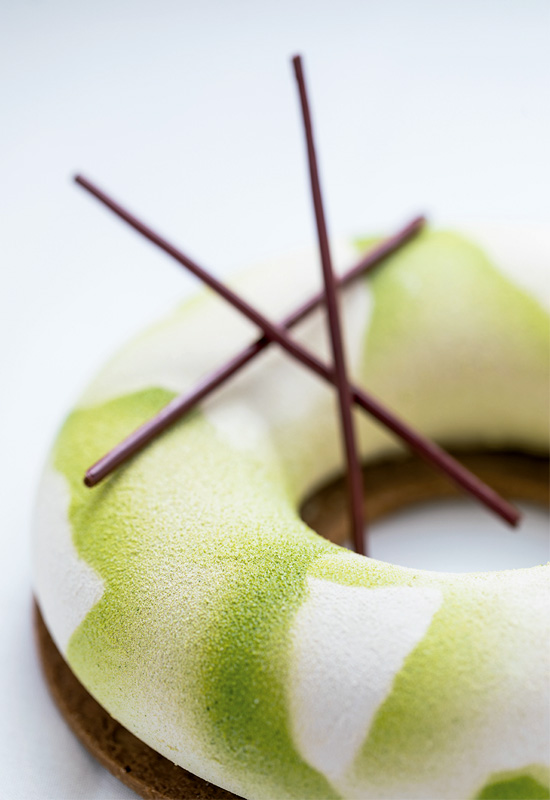Categories Pastry Chef Articles
Melissa Walnock: “I like the use of something that was there but is no longer there”
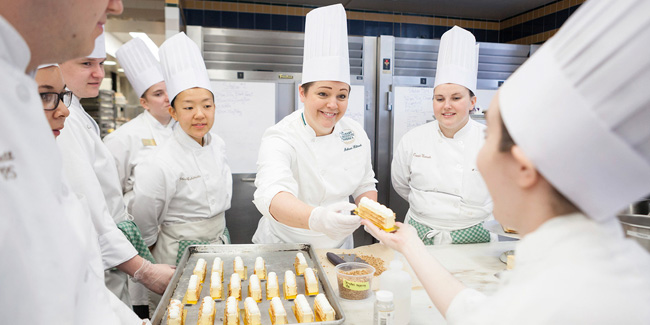
‘My childhood was rough. I have two older brothers; we grew up in the suburbs of New Yersey. We come from a multicultural ethnicity; we were the perfect example of a middle-class working family. My mom a nurse and my dad a mechanic. We grew up with very little. I always have worked hard. When I was a kid, I helped dad pump gas at his gas station and when my mom was on call, I cooked for my brothers and father. This is how my love for cooking began.’ So begins our interview at so good #22 with Melissa Walnock, Pastry Chef for The Apple Pie Bakery Café, at the Culinary Institute of America (Hyde Park New York). Prior to her current assignment, Walnock graduated from the same prestigious institution and from there she began a long professional journey that led her to work alongside distinguised chefs such as Danny Myers, Johnny Iuzzini, Floyd Cardoz or even Thomas Keller in The French Laundry.
Like many other women in the trade, this chef has had to fight and overcome to get her way.
‘I get asked by a lot of young aspiring pastry chefs how I manage to have a career and two children. My response is simple – because I want it, and when I want something, I will find a way to make it happen.’
In her long career, Walnock has lived situations that are difficult to explain and that partly explain the scarce presence of women in kitchens and workplaces: ‘When a male is angry in a kitchen, it’s seen as passion and can easily instill fear and sometimes the intimidation factor will earn respect. For a woman, emotions are seen more as a weakness or that we’re not in control. This can almost take away from our role as a manager/chef.’
Do not miss the interesting full interview and signature entremet with Melissa Walnock on sogood #22. We focus here on one of the skills of this chef, the decoration based on chocolate spray, and that magical ‘negative space’ that she projects in some of her creations.
What ingredients did you use for the spray?
I used chocolate spray only for the large leaf and I use 20% of the total weight of the chocolate in cocoa butter. I added no color to the white chocolate that I used for the leaf. I only highlighted it with green cocoa butter spray, which I use without an addition of chocolate.
Which tool is the most interesting one when it comes to applying this technique?
For the spraying of the cakes I use a PointZero 1/5 HP AirBrush compressor with a Badger Airbrush 250-8 glaze gun set. On the airbrush you are able to twist the tip that the cocoa butter comes out of up and down to properly line up with the air that is spraying out of the head. You can adjust how strong the cocoa butter spray is by adjusting up or down. I test on parchment before spraying the product. I use a heat gun to soften cocoa butter that may be stuck in the gun from previous sprays.
What temperature is the spray best at? How about the cake?
The cocoa butter temperature is quite warm as it sprays very fine and tends to cool quickly. I usually temper my cocoa butter to 30ºC when painting chocolate molds or using it on acetate for décor, but I use it at 35ºC when using the airbrush. I pull the tart directly from the blast freezer which hits about -40ºC when I am ready to spray this allows for a very small and soft looking velvet finish.
How much distance should there be between the airbrush and the cake when applying the spray?
I hold the airbrush about 2 inches from the tart when spraying. this allows me to have more control over the disbursement of the cocoa butter and to get a tighter line around the stencil.
How and why do you choose each color? What type of colorings are more suitable?
I used two different tones of green for this tart (tropical green and carnival green with a hint of chocolate brown mixed in) as they are close to what an actual rhubarb leaf would be in nature. There is a rhubarb insert in the cake and wanted to continue that theme as naturally as possible. I also used a pink quartz color on the outside of the cigarette to mimic the stalk of a rhubarb plant. I use the cocoa butter colors from Chef Rubber. They are a great consistency when melted and in temper and the colors are very vibrant. There is also a huge selection from this company in matte, satin and luster finishes.
The idea for the leaf painting came to me as I was spraying other objects in a variety of colors on top of the same piece of parchment paper.
Why is this cake decorating technique interesting compared to the ubiquitous glaze?
I like to use the cocoa butter spray in this fashion for the design because I like the use of the negative space – of something that was there but is no longer there. Almost as if the plant had just been picked up from the ground. I also think the leaf shape is almost clearer done this way than putting something in the actual shape of a leaf on the piece. The lines are clean and sharp. I find using a spray rather than glaze also makes the finish look a bit muted and isn’t completely smooth, more of the texture of sand or fine soil, again lending itself more to being from the Earth. I made the leaf by laying out an actual leaf over a rounded shape for the movement and then spraying layer after layer of the thinned white chocolate in order to get a shape that is sturdy but still is thin enough to allow light to flow through – again much like an actual leaf would do. The idea for the leaf painting came to me as I was spraying other objects in a variety of colors on top of the same piece of parchment paper. The lines were so very distinct but there is still an openness to the design that doesn’t give it a feeling of being over crowded or over decorated. I also very much like the idea that although these cakes would be the same if you produce many at a time, they are also each unique as the leaves can be sprayed in a multitude of ways. And finally, I don’t really see this technique much on entremet. Negative space is something you see on plated desserts and with actual garnish on an entremet but rarely with the spray technique.
